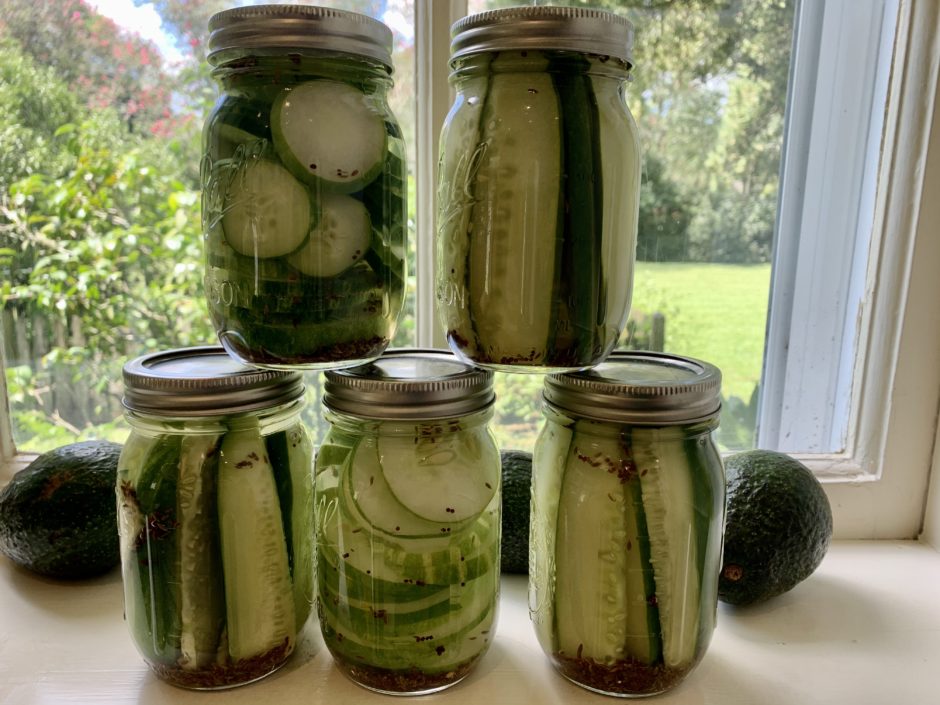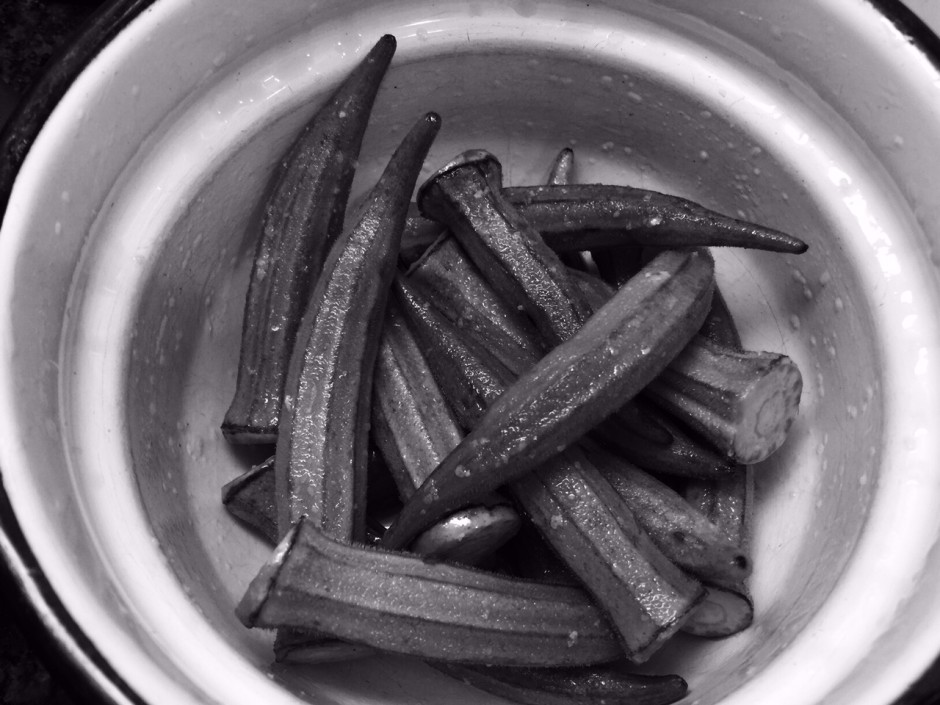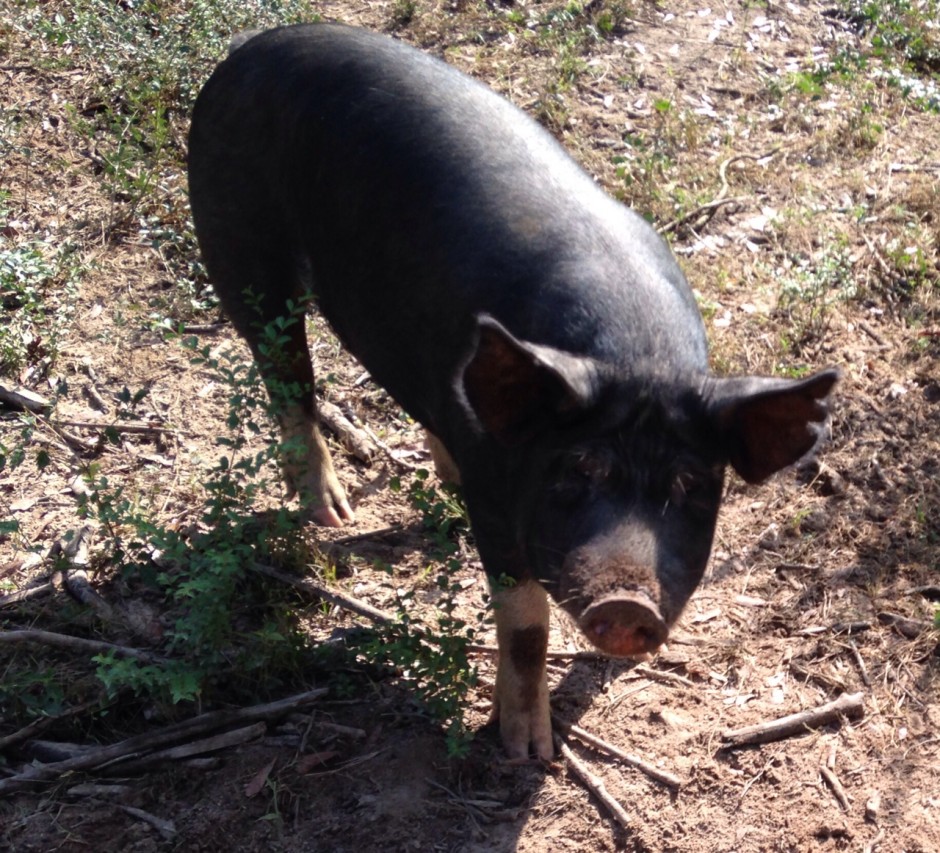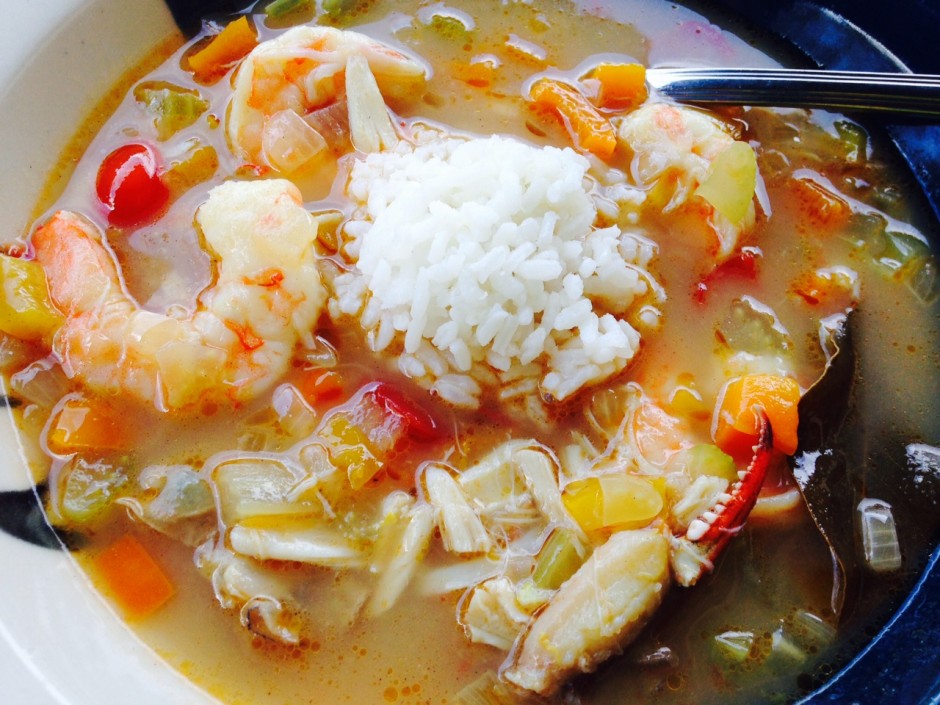My kids have been stuck at home since mid-March. Our summer garden was overrun with fresh cucumbers. The world was on fire. Nothing to do but make pickles. Continue Reading…
Roasted okra will win you over
When you start seeing okra in local groceries or farmers markets here in South Louisiana, you know the summer harvest is petering out. Only the hardiest crops – okra, eggplant and peppers – hang around in Louisiana’s unique brand of oppressive August heat. Okra, in particular, seems to close out the summer, the last blast of freshness until the fall harvest emerges.
So how to put okra to good use? Sure, fried is classic and absolutely delicious. Stewed down with tomatoes is an essential part of the Louisiana culinary roster. Pickled appeals to the masses and is perfect with charcuterie or a Bloody Mary. But for everyday enjoyment, there is no tastier, healthier, faster or easier way to prepare okra than by roasting it in a hot oven. Thanks to my pal, the author and radio host, Poppy Tooker, for recommending this to me a few years ago over lunch.
The dirty little secret of the Eat Local movement is that, very soon, we’re going to be running short on farmers to raise the gorgeous produce and heritage breed livestock we’re now so interested in. I worked on a story not long ago about this issue in Louisiana, which has seen a sharp increase in interest in local foods over the last 20 years. Farmers markets throughout the state are flourishing. But like the country as a whole, Louisiana is also witnessing the graying of its current farmers. And to boot, not enough young people are taking their places. There are various impediments, but access to affordable land is a big one.
My research took me to Iverstine Family Farms near Kentwood, Louisiana. Galen Iverstine is a former LSU political science major who got turned on to the idea of sustainable farming in one of his undergraduate English classes. Readings on the degradation of the American food system made him want to take action. He apprenticed in New Hampshire and eventually launched a livestock operation on land his dad invested in. Food lovers in Baton Rouge and beyond are relishing Iverstine’s Berkshire pork, grass fed beef, heritage turkeys and more. It’s an interesting example of a young person who found a way to make a career in farming work.
Here’s a link to the latest issue of Currents magazine, where my article “Future Farmers” appears.
Oh good gosh, it was cold this morning! I know my buddies northward are laughing at what a wimp I am, but it was 29 degrees when we woke up — way too cold for us thin-blooded Southern weenies. The only antidote is a steaming bowl of gumbo. I’m guessing it’s what everyone around here will be making this weekend.
My go-to gumbo is usually seafood (unless it’s a post-Thanksgiving turkey-bone gumbo), and I’ve played around with the recipe for years. Gumbo is inherently forgiving, but seafood – less so than chicken and sausage. Plus, it’s costlier to get wrong.
Lots of trial and error and plenty of mediocre batches have taught me what it takes to achieve a great seafood gumbo. Sure, dark homemade roux is important. So is using fresh Gulf seafood that you take the time to clean properly. But the most important ingredient in my opinion is patience: Don’t put the seafood in until your broth has had ample time to brew. Overcooking tender shrimp, crab and oysters leaches their flavor and sends their texture in a mealy direction. It’s the easiest way to ruin a batch of seafood gumbo.
Here are a few tips to making a fabulous version of this beloved dish.
- Make your own roux and bring it to as dark a hue as you’re comfortable. Anything between dark brown to nearly black will provide optimum flavor and color. I don’t get too hung up on the overall color of the gumbo as long as the flavor is there.
- Use my 1-2-10 rule. One cup of roux, 2 pounds EACH crabmeat, oysters and shrimp and 10 cups of seafood stock.
- Buy your shrimp head-on, and make a quick seafood stock out of the heads and shells as you’re cleaning them and making your roux. Add onions, celery, carrots, garlic, peppercorns, salt and bay leaves and simmer for 30-60 minutes.
- Combine the roux, chopped aromatic vegetables (onions, celery, bell peppers) and stock and let it simmer for at least 30 minutes. Taste to ensure the broth has plenty of flavor and is well-seasoned. Remove from heat. Then add the fresh seafood. There’s no need to turn the heat back on. The crab is already cooked. The oysters will curl and the shrimp will turn firm and pink in 1-2 minutes. Remember, they’ll continue to cook in the hot pot, and will cook further each time you reheat the gumbo.
Welcome!
You’re probably here because you love food – Southern food in general, and Louisiana cuisine in particular. Food is evolving in Louisiana, just as it is everywhere else on the planet. But here, food informs identity in a manner that is distinct and fascinating. Live here long enough and you feel the influence and tug of the culinary culture. Nowhere else are the foodways as specific and intact as they are in the Bayou State.
This blog is a place to park our thoughts about Louisiana’s foodways, its people and culture. It’s also where you can find links to my articles in regional publications, and soon, snippets from my book,Hungry for Louisiana, An Omnivore’s Journey (LSU Press, March 2015) In it, I take a look at how food sets life’s rhythm in the Bayou State, a place where local and seasonal were always a priority – well before it was cool. Each chapter examines a different emblematic food from the Louisiana tableau and why it has such a strong hold on us. I wrote it after years of covering the food and culture of Louisiana as a food and features writer.
Food starts with community, so along the way, I want to hear what you have to say. Stay in touch by commenting on posts, or through Facebook, Instagram, LinkedIn and Twitter.
Thanks for stopping by!





